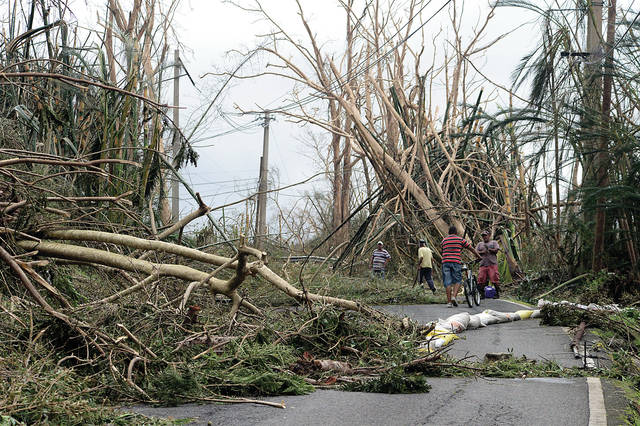SAN JUAN, Puerto Rico — The sky was darkening Thursday afternoon as 10-year-old Sarah Jimenez laid out three plastic buckets on her grandmother’s patio in hopes of capturing rainwater. ADVERTISING SAN JUAN, Puerto Rico — The sky was darkening Thursday
SAN JUAN, Puerto Rico — The sky was darkening Thursday afternoon as 10-year-old Sarah Jimenez laid out three plastic buckets on her grandmother’s patio in hopes of capturing rainwater.
“We can use it to at least flush the toilets,” she told her grandmother.
A day after Hurricane Maria ravaged Puerto Rico, flooding towns, crushing homes and killing at least two people, millions of people on the island faced the dispiriting prospect of weeks and perhaps months without electricity. The storm knocked out the entire grid across the U.S. territory of 3.4 million, leaving many without power to light their homes, cook, pump water or run fans, air conditioners or refrigerators.
As a result, Jimenez and others hunted for gas canisters for cooking, collected rainwater or steeled themselves mentally for the hardships to come in the tropical heat. Some contemplated leaving the island.
“You cannot live here without power,” said Hector Llanos, a 78-year-old retired New York police officer who planned to leave Saturday for the U.S. mainland to live there temporarily.
Like many Puerto Ricans, Llanos does not have a generator or gas stove. “The only thing I have is a flashlight,” he said, shaking his head.
“This is never going to return to normal.”
Maria’s death toll across the Caribbean, meanwhile, climbed to at least 19, nearly all of them on the hard-hit island of Dominica. In Puerto Rico, the government said at least two were killed.
As of Thursday evening, Maria was moving off the northern coast of the Dominican Republic with winds of 120 mph. The storm was expected to approach the Turks and Caicos Islands and the Bahamas early today.
From there, it is expected to veer into the open Atlantic, no threat to the U.S. mainland.



